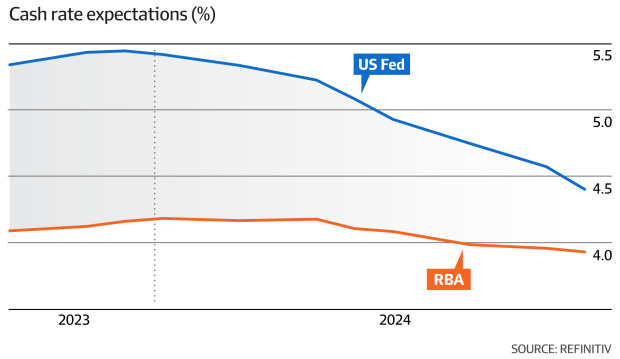“The Reserve Bank will continue to run that line that inflation is coming down, but services inflation is still a concern and the labour market is still tight. That will keep them cautious,” Ms Ong said.
Indeed, data on Thursday showed Australian employment rebounded in August, when 64,900 jobs were created, smashing forecasts for a gain of 23,000. At a steady unemployment rate of 3.7 per cent, the economy looks to be coping well with the RBA’s 4 percentage points of cash rate increases since last year.
Pendal head of government bond strategies Tim Hext said the figures meant the RBA’s “narrow path” to a soft economic landing was widening. But he is concerned about rising fuel costs.
“The only near-term threat to an RBA on hold is not domestic data but oil prices,” he said. “If they move back above $US100, they could reignite inflation in Australia and raise the alert level at the RBA.”
Oil prices are trading at a 10-month high after a months-long effort by major producers Saudi Arabia and Russia to take supply out of the market. That’s fed through to the petrol pump, where spending was up 9.5 per cent last month.
Economists said the spike in fuel costs could mean the RBA might have to lift rates once more.
JPMorgan chief economist Ben Jarman said: “Alongside firmer numbers on near-term inflation likely to come through the energy channel in the next couple of months, we still see the RBA as biased to do a little more to manage risks around achievement of the target.” He expects one final rate increase to 4.35 per cent.
The Australian dollar jumped to US64.53¢ on Thursday but quickly ran out of steam to trade up 0.3 per cent to US64.44¢. It touched US63.79¢ overnight following the uptick in US inflation.
Bond prices rallied slightly. The three-year was down 2 basis points to 3.84 per cent and the 10-year was steady at 4.11 per cent. Bond futures ascribe a 56 per cent chance that Australia’s cash rate peaked at 4.1 per cent, from 53 per cent before the data.
Meanwhile, US Fed fund futures imply similar odds that the Fed is also done raising rates. Yet, the fact that there is no clear majority indicates that traders are unsure about the path of interest rates in the US and Australia.
Fortlake Asset Management founder Christian Baylis said: “The thing that central banks are deliberating is ‘are rates staying on hold for a longer period or do we get ahead of the curve and do a bit more pre-emptively?’.”
He said the RBA’s preference was to keep the current cash rate at 4.1 per cent for a longer period, rather than raise rates again.
“Central banks are feeling around in the dark trying to find their way because they believed they have tightened policy a lot, but the reality is, we don’t know whether it’s a lot until we start to see the labour market loosen up and there’s just no indication at this juncture,” said Mr Baylis.
Holding policy tight for another six months could allow inflation to build up, resulting in higher interest rates, he added.
Credit: Source link




